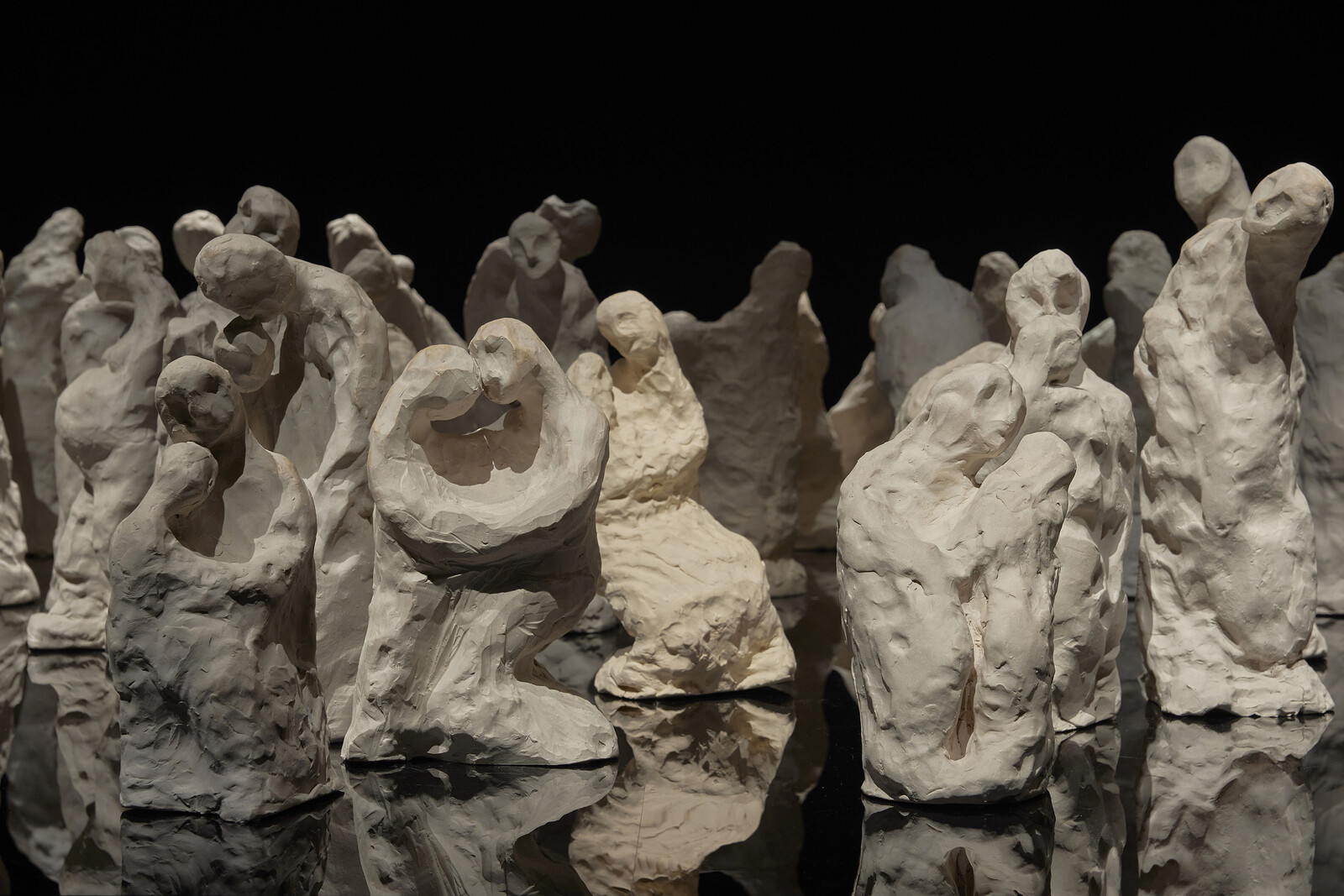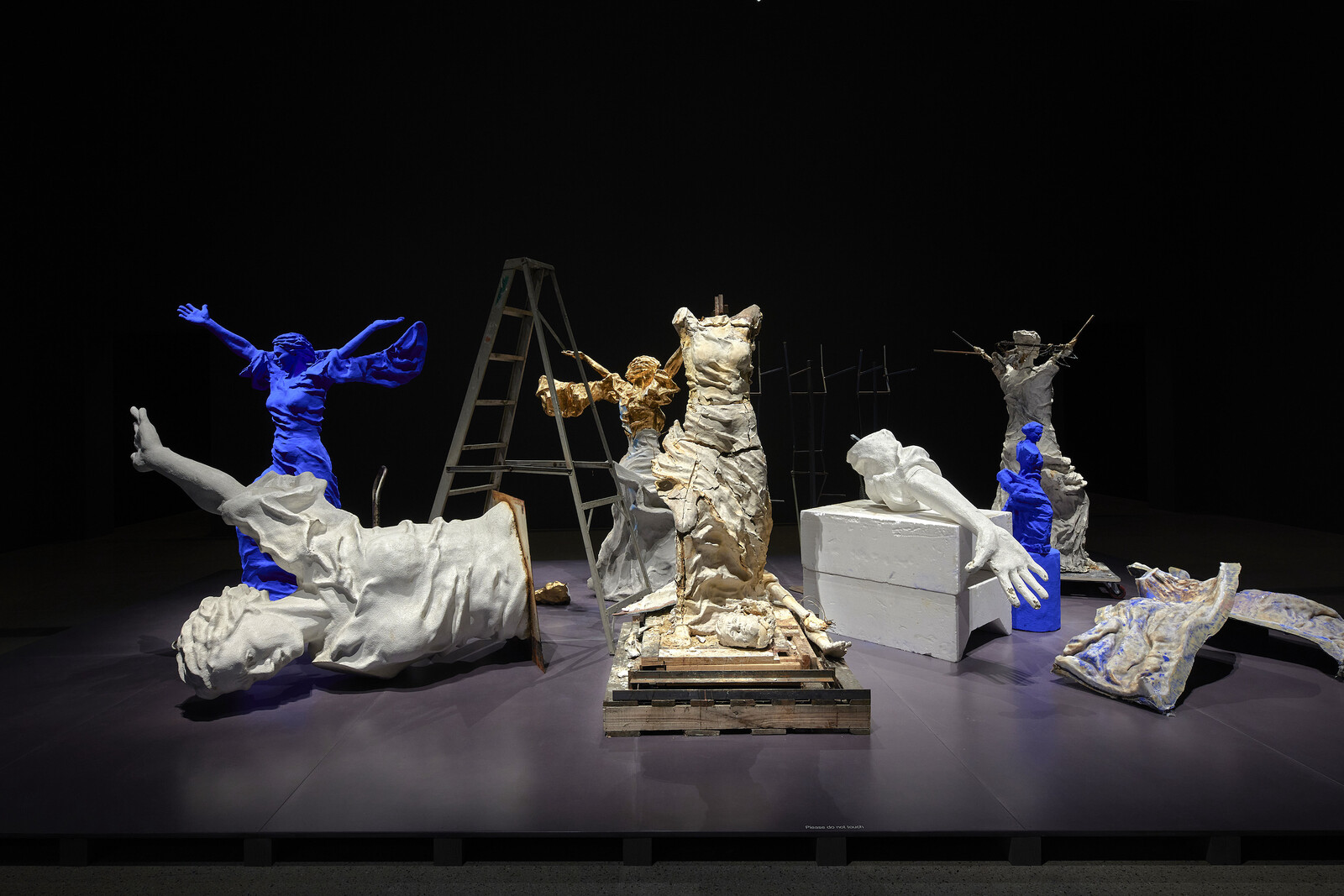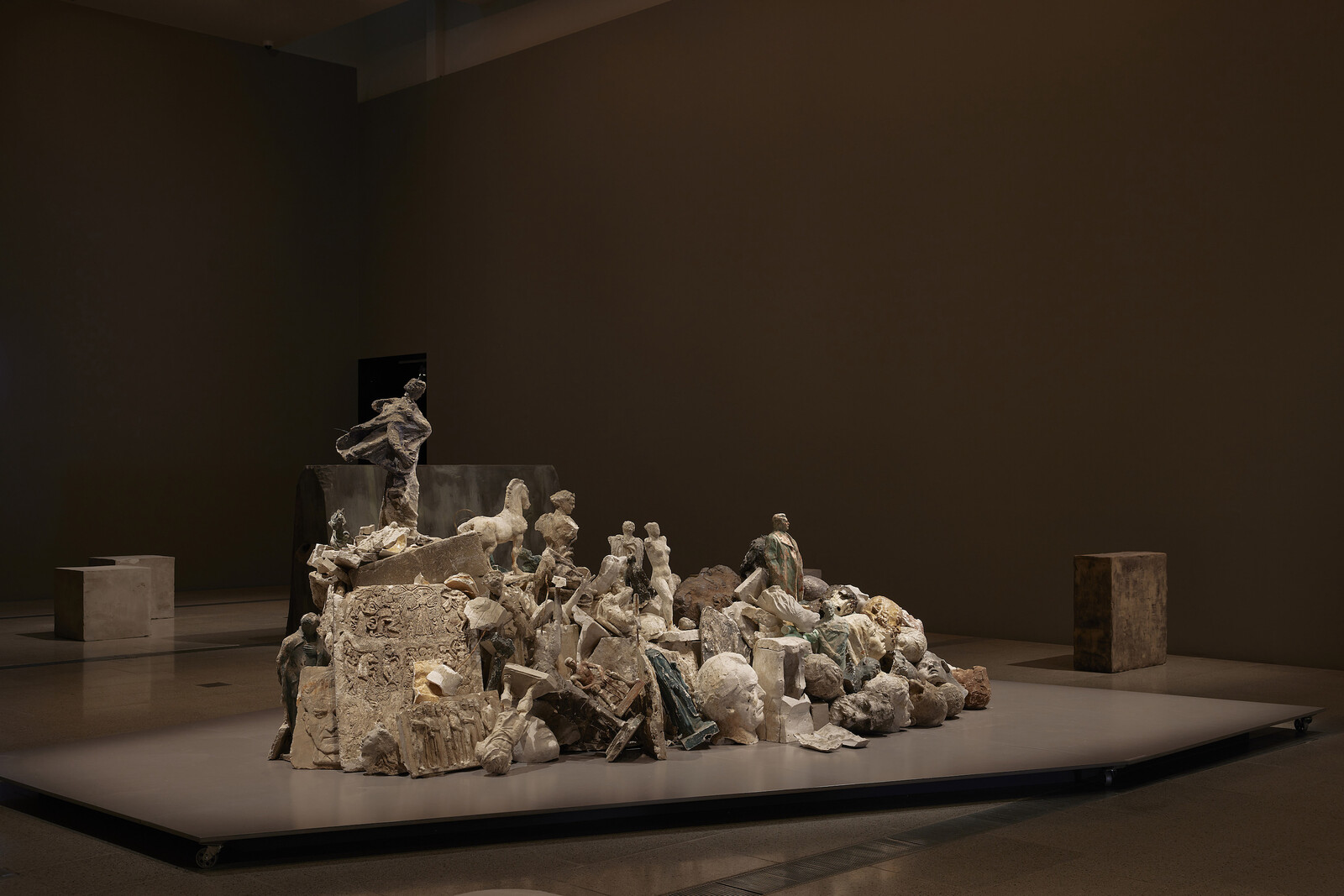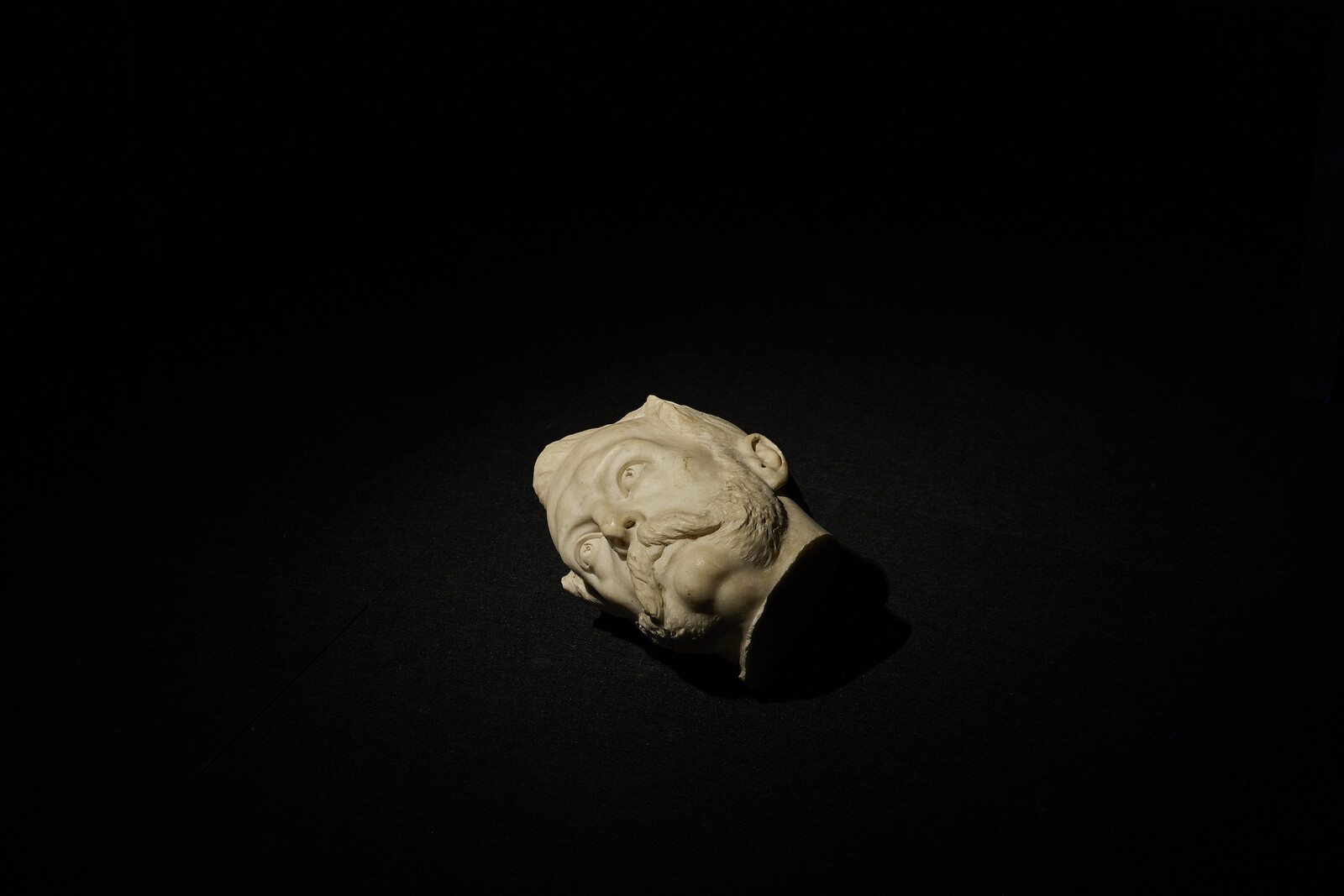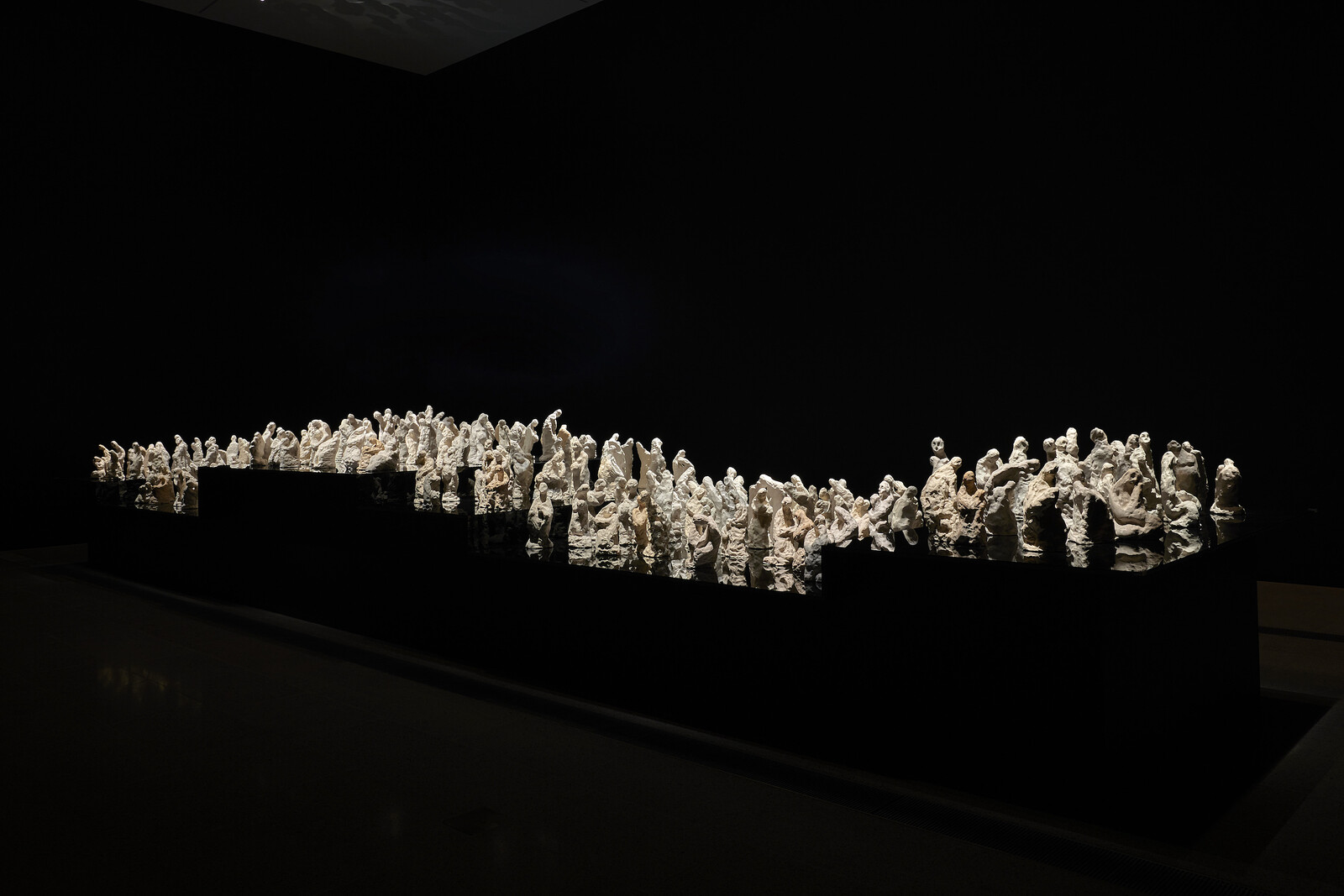How should a monument be? Who deserves one? And who decides? One response pertinent to Nina Sanadze’s engrossing survey exhibition in her homebase of Melbourne occurred in January 2024, on the eve of Australia Day. Activists there removed a sculpture of Captain Cook and left behind the spray-painted words “The colony will fall” on the plinth. When authorities announced that the statue would be reinstated, the sense was of history reasserting itself. Sanadze’s show, which features installations and sculptures that repurpose fragments of historic statues, explores the way monuments—from sculptures to photographs—shore up particular versions of history, apparently doomed to reoccur.
Sanadze was born in Georgia’s capital, Tbilisi, in 1976, surrounded by large-scale public sculptures of Lenin. As a child she lived next door to the prominent Soviet sculptor Valentin Topuridze (1907–80) and remembers the enormous hands and head of Lenin scattered around his garden. “We kids would climb them,” she has said, adding, “all these figures would be overgrown with grapes, and it was really beautiful, that ruined aesthetic that’s sort of classical art, but not in its perfect museum form.”1 Many of Topuridze’s public monuments were destroyed after Georgia gained its independence from the Soviet Union in April 1991. His family hid some of his small-scale works, including plaster models and their molds, which they gave to Sanadze during her return visit to Tbilisi in 2018. Her airy, well-spaced exhibition begins dramatically with Apotheosis (2021), which offers a taste of Topuridze’s studio archive. It’s a haphazard pile of fractured statuary resembling the dustbin of history: including fragments of leaders (notably Joseph Stalin) jutting out of the fray, and traces of classical antiquity, such as the Winged Victory of Samothrace (190BCE).
2018 marked the centenary of Lenin’s proposed plan of “Monumental Propaganda,” wherein he ordered the removal and destruction of monuments “erected in honor of tzars and their servants.” Because of his dictate, for at least a century the Topuridze family was also holding on to the decapitated marble head from a statue of the reformist Tsar Alexander II (1818–81), sculpted by Peter Clodt von Jürgensburg (1805–67). It once stood atop a grand monument in the center of Tbilisi and was replaced in 1956 by Topuridze’s statue of Lenin. Sanadze’s dark, room-sized installation Head under the bed (2023) features the fragment in a recreation of her initial encounter with it. One can barely see the frames of what appears to be a bed and side table, while the theatrically spotlit head of Alexander II, which presumably had been collecting dust under the furniture, appears ready for its soliloquy.
The most compelling—and overwhelming—piece in the show appears in its final, large room. The sprawling installation Hana and child (2023) is made up of over 300 small, unfired clay sculptures of the same motif: a Pietà-esque mother holding a child. Congregating on multi-tiered plinths and haphazardly arranged, these works convey an urgency—a desire to remember and memorialize. The piece was made in response to the Ivanhorod Einsatzgruppen photograph taken in 1942 on the Eastern Front. It depicts a Nazi soldier aiming his rifle at a Jewish woman who is attempting to shield a child with her body in the eponymous village in German-occupied Ukraine. Sanadze has questioned if the woman was her maternal great-grandmother, Hana, who was murdered in the same province during the war, along with three of her children.
As Susan Sontag once wrote, “Narratives can make us understand. Photographs do something else: they haunt us.”2 Sanadze’s visceral installation is both touching and hard to stomach. And while the work clearly draws attention to the current conflict in the Ukraine, the collapsed shape of the sculptures also evokes the photograph taken for Reuters by Mohammed Salem on October 17 of Inas Abu Maamar holding her dead niece Saly, aged five, in Gaza. Saly’s mother had also been killed when an Israeli missile struck their home. The widely circulated portrait has become a monument to a vile historical recurrence in Palestine. As viewers, we are of course implicated in this repetition.
[Editors’ note: The editors and writer became aware after the publication of this review of comments reportedly made by the artist in a leaked Whatsapp group in relation to Palestine. We regret the oversight in failing to include mention of them in the piece.]
Stephen A. Russell, “Artist Nina Sanadze interrogates dark histories at NGV Australia,” The Saturday Paper (April 20–26, 2024), https://www.thesaturdaypaper.com.au/culture/visual-art/2024/04/20/contemporary-artist-nina-sanadze#hrd.
Susan Sontag, Regarding the Pain of Others (New York: Farrar, Straus and Giroux, 2003), 83.
